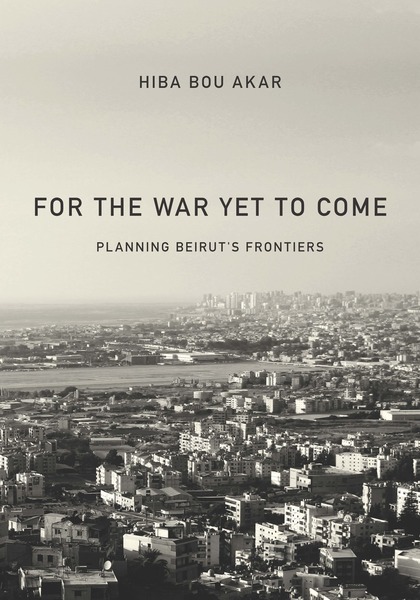I fell in love with Beirut (its people and its food!) on my first visit, and I’ve returned many times since. The first was in 2005, when I gave a plenary lecture to a conference on ‘“America in the Middle East/The Middle East in America” at AUB. I was back in 2006, shortly after the Israeli bombing of Beirut’s southern suburbs during the summer, and my plenary lecture to the Arab World Geography conference referred directly to those attacks (and marked the start of my work on aerial violence): see ‘In another time zone, the bombs fall unsafely’ (DOWNLOADS tab).
I took my title from a poem by Blake Morrison, ‘Stop’ (above), which was reprinted in an anthology to aid children’s charities in Lebanon compiled by Anna Wilson after the Israeli attacks.
Most of what I know about Beirut, both at first hand and from reading, comes from the brilliant work of Mona Fawaz and her students – I vividly remember Mona taking me around the rapid-fire construction taking place in the southern suburbs amidst the rubble from the air strikes – so I’m really pleased to see Emma Shaw Crane‘s appreciation of Hiba Bou Akar‘s For the War Yet to Come: Planning Beirut’s Frontiers over at Public Books.
Emma explains:
Halfway through Bou Akar’s fieldwork, the “ghost of the civil war returned,” with the events of May 7, 2008, the worst sectarian fighting in Beirut since the civil war. When a Sunni Future Movement–led national government declared Hezbollah’s telecommunications infrastructure illegal, street battles broke out across the southern suburbs between Hezbollah, allied with Haraket Amal, and the Future Movement and the allied Druze PSP. The southern peripheries were once again battlegrounds. This time, the fight was for infrastructure.
Urbicide is the targeted destruction of cities as a tactic of war. The violence chronicled here is not aerial annihilation—hospitals and homes reduced to rubble—but the “gradual construction of buildings and infrastructure” in ways that collapse boundaries between war and peace, militarizing everyday life. A window in an apartment building is at once a source of light and a future sniper location; a ruin may be uninhabitable, but the land beneath it marks the edge of a territory. This doubleness saturates life on the on the peripheries of Beirut, where “every built space is a potential future battle space.”
For the War Yet to Come is a feminist and postcolonial critique of a masculinized geography of urban militarism that favors the spectacular and the sublime. This vision of the city at war is blindingly technological and curiously devoid of people, as if seen from above (perhaps from a fighter jet). Bou Akar’s Beirut is peopled, swirling with rumor. It is the site not of anonymized destruction but of calculated and complex construction.
Succinct and to the point, though I think it’s important to use the one to undercut the other: to reveal the masculinism that inheres in aerial violence (see below: the text is from John Steinbeck‘s appreciation [sic] of USAAF bomber crews in the Second World War, Bombs Away!; I used it in my Tanner Lectures) ––
–– but also to show that those who live in cities under siege are neither voiceless nor without creative, collective agency (something I’ve tried to achieve in my work on Syria: see the GUIDE tab).
You can access the opening section of For the War Yet to Come here, and here is a syposis of the book:
Beirut is a city divided. Following the Green Line of the civil war, dividing the Christian east and the Muslim west, today hundreds of such lines dissect the city. For the residents of Beirut, urban planning could hold promise: a new spatial order could bring a peaceful future. But with unclear state structures and outsourced public processes, urban planning has instead become a contest between religious-political organizations and profit-seeking developers. Neighborhoods reproduce poverty, displacement, and urban violence.
For the War Yet to Come examines urban planning in three neighborhoods of Beirut’s southeastern peripheries, revealing how these areas have been developed into frontiers of a continuing sectarian order. Hiba Bou Akar argues these neighborhoods are arranged, not in the expectation of a bright future, but according to the logic of “the war yet to come”: urban planning plays on fears and differences, rumors of war, and paramilitary strategies to organize everyday life. As she shows, war in times of peace is not fought with tanks, artillery, and rifles, but involves a more mundane territorial contest for land and apartment sales, zoning and planning regulations, and infrastructure projects.
Here is the list of Contents, but if you go here you can find a detailed abstract for each chapter:
Prologue: War in Times of PeaceChapter 1: Constructing Sectarian Geographi
Chapter 2: The Doubleness of RuinsChapter 3: The Lacework of ZoningChapter 4: A Ballooning FrontierChapter 5: Planning without Development
Epilogue: Contested Futures


